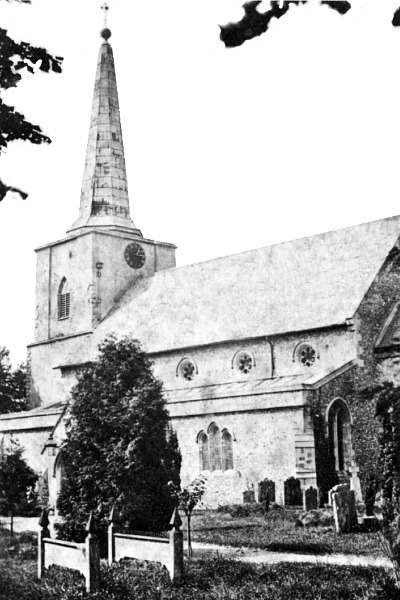The Princes Risborough Clock
A short history
|
John Tomlinson of Bicester and Thame, was born in 1756. He made longcase clocks, repaired Fritwell church clock, and repaired Thame church clock in 1772 and 1782.
Also, that some of the sets of markings on the face being more deeply engraved than others, may indicate that it had previously been used for a single hand clock. The modern two handed clock started to become common during the early 1700's.
|

The Steeple after it had been rebuilt.
|
Some extracts from the Risborough Church Wardens accounts
|
In 1799 John Stratton received a guinea a year for the daily task of climbing the tower to wind up the clock.
1804 Feby 1st The Church Tower fell down 1808 John Ward hanging small bell 6s 11d |
When the Steeple collapsed it damaged the roof and the bells. The steeple was rebuilt, though the clock was not repaired until 1831.
It was returned to its original position on the eastern wall of the tower, facing market place.
The spire was made of wood, and later, in an attempt to make it weatherproof, clad in sheets of zinc. These were painted to represent stone. The Small bell is dated 1805, and cast using some of the metal from the bells damaged when the steeple collapsed. |
|
1822 Paid Mr Sharp a new weathercock for the Spire £4/10/0
1829 Mr Tomlinson 15/- 1830 Aug 25 James Bafs for carriage of Church Clock to Thame 3/- 1831 Mr Tomlinson repair of clock £34/5/6 1831 John Stratton attended to clock £1/10/0 1836 Mr Tomlinson 15/- 1838 Mr Child 9/- 1862 Mr Child clockmaker £3/19/6 1874 Child & son £2/2/- |
The clock received periodic attention from the clockmakers Mr Tomlinson and Mr Child who came from Great Missenden. In 1861 the Clock was adapted to strike the hours on the Large Bell. The Large Bell was presented by Sarah Norris in 1861, in memory of her husband John. He had been a surgeon, and had died 1838. In 1868 a restoration of the church was carried out by Sir Arthur Blomfield, and the pitch of the nave, chancel and porch roofs were raised. By 1907 it was reported that the steeple 'presented an indescribably rusty appearance'. Following local fund raising the present spire was built, though no provision was made for the clock. Dr Macfarlane, in his book 'Princes Risborough in old picture postcards' suggests this may be because there was now a clock in the Market House. The Clock has remained stored in the tower until being removed for restoration in the Spring of 1998.
|
|
Sources: Genealogical research by Mrs Pat Dennis 'St. Mary's Church Princes Risborough. An Historical Guide' by Rex Kidd, 1997. 'The Story of The Parish Church of St. Mary Princes Risborough' by Robert Bailey, 1957. 'Princes Risborough in old picture postcards' by A.J.Macfarlane, 1984, European Library. 'Princes Risborough Past' by Sandy Macfarlane and Chris Kingham, 1997, Phillimore.
|